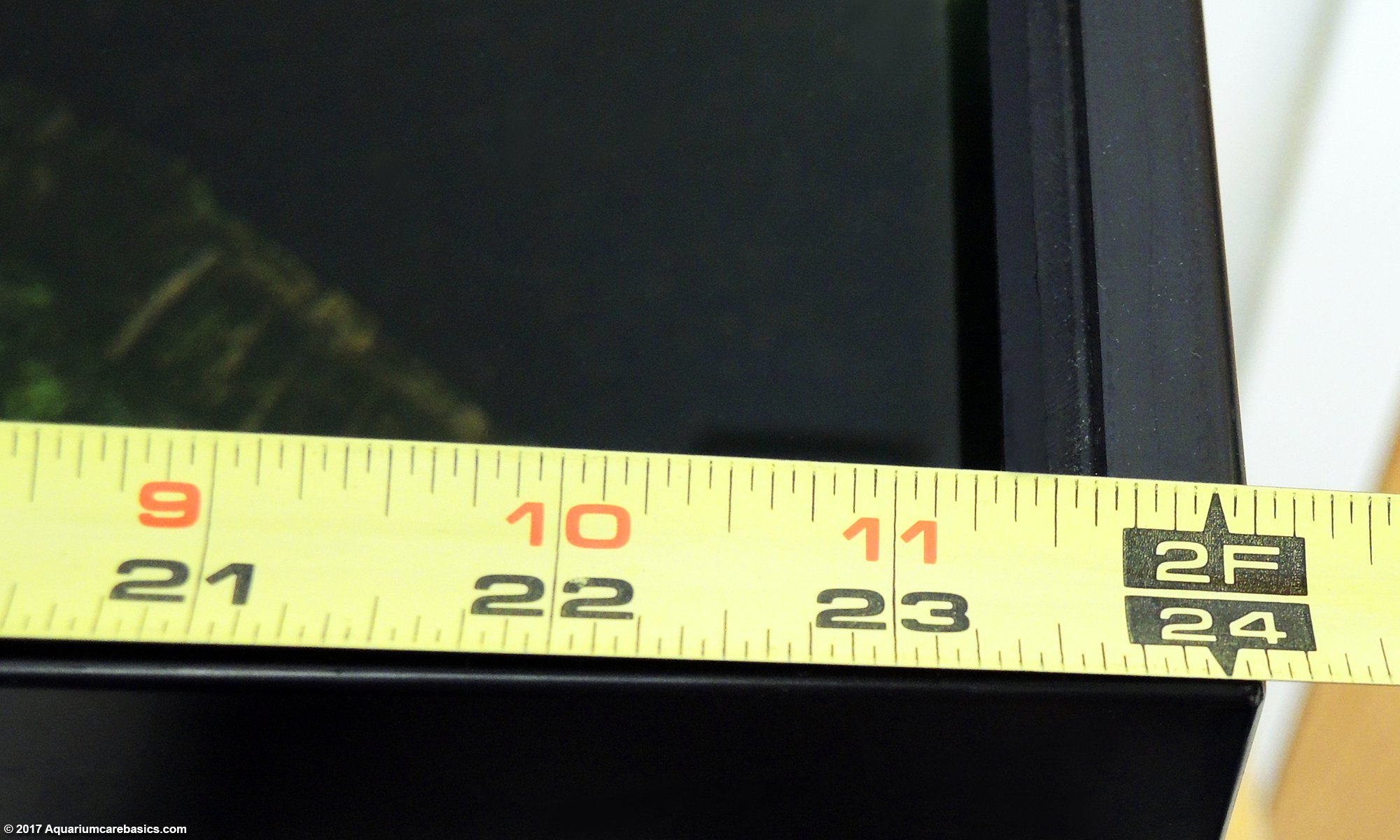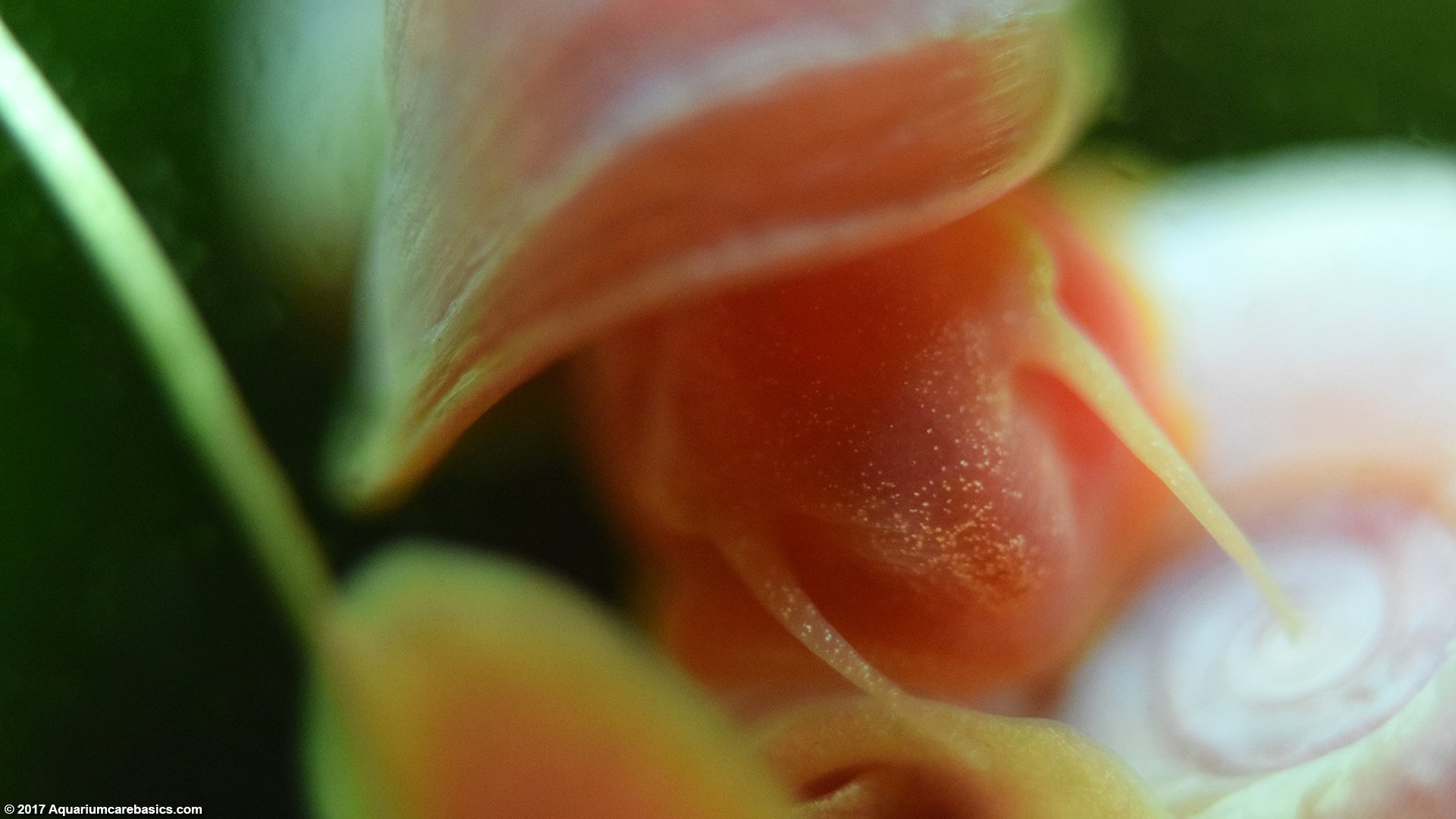Aquarium dimensions and sizes may vary slightly by brand or by trim type and color. The aquarium dimensions of one brand of tank may be slightly larger (or smaller) than the aquarium dimensions for the same gallon tank of a different brand. Similarly, the aquarium dimensions of a tank with one color trim may be a slightly different aquarium size compared to the same gallon tank with a different color trim.
This slight difference in aquarium dimensions may not be a significant concern in most cases. But it’s something to keep in mind, especially if buying a tank of one brand and an aquarium hood, cover or an aquarium stand of another brand, for instance.
Aquarium Dimensions: Take Measurements
It’s generally good practice to bring a tape measure to the local fish store and double check actual measurements notwithstanding what is printed on the outside of the box.
Ask the clerk at the local fish store to measure the aquarium dimensions, and then measure the corresponding hood out of the box to see if it actually fits the tank being purchased. Go through the same procedure for the aquarium stand or cabinet as well. It’s a good idea to physically inspect products at the store before buying. Sometimes items are returned by customers, put into the wrong box and then resold. One may think they are getting an item according to the size written on the box only to find out that what they ended up with is it not what they expected. So measure and check before leaving the store It just saves the time and trouble of not getting it right and having to return the items later. It’s better to think twice and pay and pour once, as opposed to pay, pour and regret.
Aquarium Dimensions: Sizes Under 10 Gallons
Aquarium dimensions for a 10 gallon aquarium, and lower, are considered small tanks and have a limited bio-load capacity and a very thin margin for error. If keeping a small tank, be certain to have adequate filtration and avoid overstocking. Along these lines, as aquarium dimensions increase so does bio-load capacity as well as the need for greater filtration capacity. Either way, its important for hobbyists to proceed slowly and methodically.
All measurements are in inches:
2.5 Gallon Aquarium: 12 x 6 x 8 – 12 3/16 x 6 1/8 x 8 1/8
5.5 Gallon Aquarium: 16 x 8 x 10 – 16 3/16 x 8 3/8 x 10 1/2
10 Gallon Aquarium: 20 x 10 x 12 – 20 1/4 x 10 1/2 x 12 9/16
15 Gallon Aquarium: 24 x 12 x 12 – 24 1/4 x 12 1/2 x 12 3/4
15 Gallon Aquarium: 20 x 10 x 18 – 20 1/4 x 10 1/2 x 18 3/4 (High)
20 Gallon Aquarium: 24 x 12 x 16 (H); 30 x 12 x 12 (L); 20 x 10 x 24 (Extra High)
25 Gallon Aquarium: 24 x 12 x 20 – 24 1/4 x 12 1/2 x 20 3/4
29 Gallon Aquarium: 30 x 12 x 18 – 30 1/4 x 12 1/2 x 18 3/4
30 Gallon Aquarium: 36 x 13 x 16 – 36 1/4 x 12 5/8 x 16 3/4
40 Gallon Aquarium: 36 x 13 x 20 (High)
40 Gallon Aquarium: 48 x 13 x 16 – 48 1/4 x 12 3/4 x 16 7/8 (Long)
45 Gallon Aquarium: 36 1/4 x 12 5/8 x 23 3/4
50 Gallon Aquarium: 36 3/8 x 18 3/8 x 19
55 Gallon Aquarium: 48 x 13 x 21 – 48 1/4 x 12 3/4 x 21
60 Gallon Aquarium: 48 x 13 x 24
65 Gallon Aquarium: 36 x 18 x 24 – 36 3/8 x 18 3/8 x 25
75 Gallon Aquarium: 48 x 18 x 21 – 48 1/2 x 18 1/2 x 21 1/8
90 Gallon Aquarium: 48 x 18 x 24 – 48 1/2 x 18 1/2 x 25 3/8
Aquarium Dimensions: Sizes Over 100 Gallons
110 Gallon Aquarium: 48 x 18 x 30
120 Gallon Aquarium: 48 x 24 x 24 – 48 1/2 x 24 1/2 x 25 1/2
125 Gallon Aquarium: 72 x 18 x 21
150 Gallon Aquarium: 72 x 18 x 28
180 Gallon Aquarium: 72 x 24 x 25 – 72 1/2 x 24 1/2 x 25 5/8
210 Gallon Aquarium: 72 1/2 x 24 1/2 x 29 5/8
Aquarium Dimensions: Breeder & Tanks
In addition, there are types of specialty tanks with different aquarium dimensions. Bow front tanks, tanks with round shapes, and hexagon shaped tanks to name a few. When considering purchasing a specialty tank, be mindful that these types of tanks have non-rectangular aquarium dimensions so measure and plan accordingly.
10 Gallon Hexagon: 14 1/2 x 12 9/16 x 18 3/4
20 Gallon Hexagon: 18 3/4 x 16 1/4 x 20 5/8
35 Gallon Hexagon: 23 1/4 x 20 3/16 x 24 3/4
60 Gallon Hexagon: 27 1/4 x 24 1/8 x 29 1/2
Other types of fish tanks used for breeding purposes. The aquarium dimensions of breeder tanks vary based on the gallon size and water volume, but they generally are deeper in terms of width. Just be aware that when one speaks of a 40 gallon tank for example, it may be 40 gallon long tank a 40 gallon breeder tank, each with different aquarium dimensions.
Aquarium Size: Is It Right For The Room?
It’s a good idea to think of aquarium size in terms of the aquarium setup as a whole. While that includes the number of gallons and water volume, it also includes size and area considerations including:
The actual aquarium dimensions;
Room for the aquarium stand or cabinet;
Space between the back of the aquarium and the wall; and
The amount of free area around the front, sides and above the tank.
Many years ago a friend had an aquarium size that was too large for the room it was in. On top of that, children would play in the area in front of the tank, and the area around the tank was really a high traffic pathway in the room. One day, someone was vacuuming the rug in front of the aquarium and the vacuum handle went right through the glass. Fortunately they were able to save the fish, but the whole scene was quite a mess.
Along those lines, pay particular attention to any shelving or hanging items in the space above the tank. It’s possible that something may fall off the shelf or the wall, and hit the tank glass just right. The next thing you know you’re in buckets, towels and squeegee mode…not to mention it could be fatal to the fish.
Another consideration is to make sure the aquarium size allows for enough room between the back of the tank and the wall. Make sure to provide space for accessories such as a power filter or canister filter, air hoses and water hoses, a digital timer and electrical plugs…not to mention the aquarium stand or cabinet itself. And be sure to account for the space needed to reach around the back of the setup to clean and maintain the tank.
Other Considerations Regarding Tank Size
Other things to think about when considering aquarium size is what species will be kept in the tank. For example, aquarium crayfish can be very territorial and aggressive and should be kept in larger size tanks with big footprints. Oscar Cichlids grow to be very large and should be kept in larger tanks as well. Calm species like freshwater shrimp and freshwater snails can be kept in smaller tanks provided they are not overstocked.
A tool for calculating aquarium water volume can be found here.


